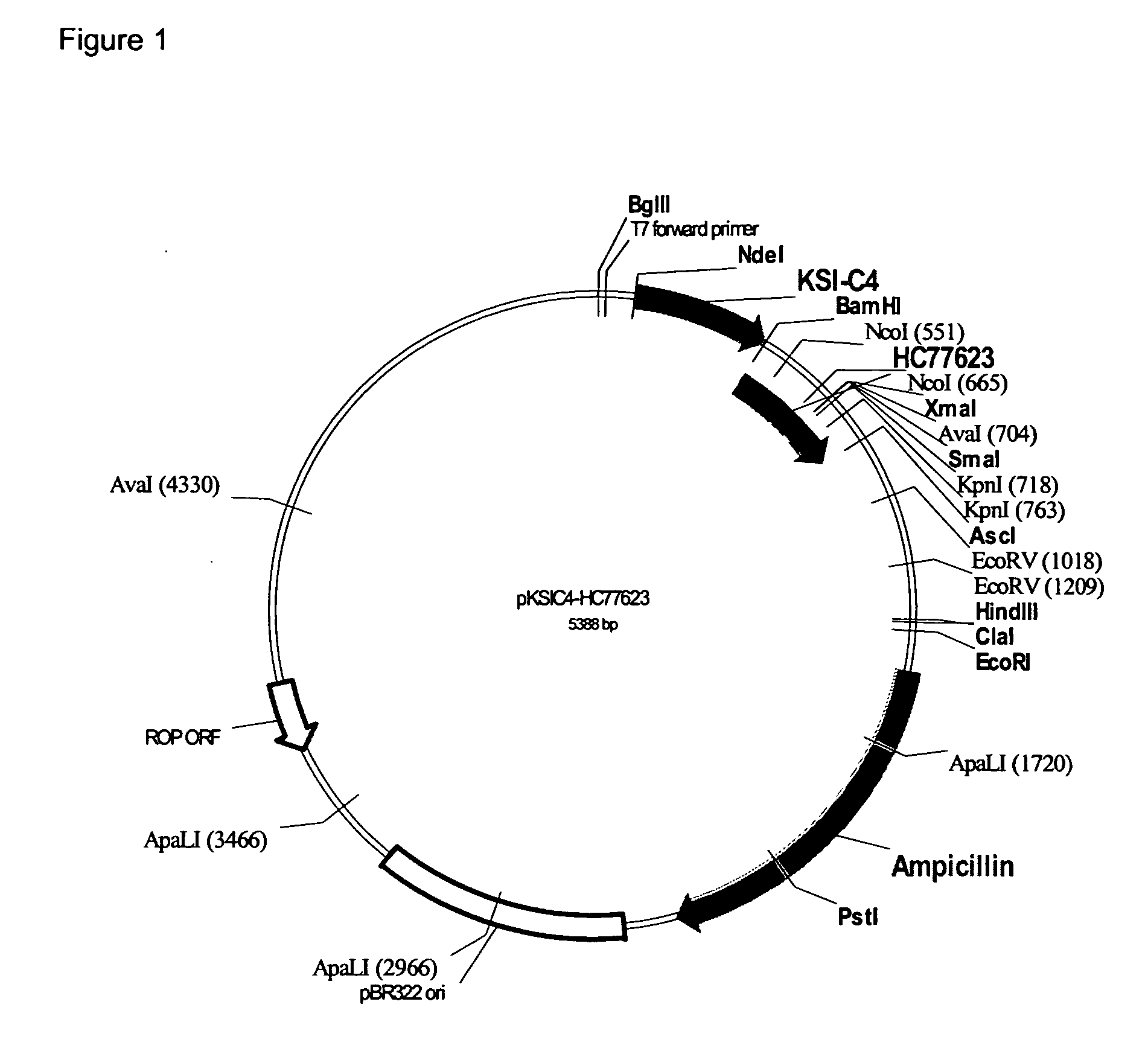Method for enhancing the effect of particulate benefit agents
a technology of benefit agent and particulate, which is applied in the field of enhancing the effect can solve the problems of lack of long-lasting effect, hair damage, and inability to achieve long-lasting effect, and achieve the effect of enhancing the longevity of the binding of particulate benefit agen
- Summary
- Abstract
- Description
- Claims
- Application Information
AI Technical Summary
Benefits of technology
Problems solved by technology
Method used
Image
Examples
example 1
Selection of Polymethylmethacrylate (PMMA)-Binding Peptides Using Biopanning
[0140] The purpose of this Example was to identify phage peptides that bind to polymethylmethacrylate (PMMA) using a modified phage display biopanning method.
[0141] The Ph.D.™-12 Phage Display Peptide Library Kit and Ph.D.™-7 Phage Display Library Kit were used in this Example. Each initial round of experiments was carried out using the original library provided by the manufacturer in order to avoid introducing any bias into the results.
Biopanning Against a PMMA Surface:
[0142] The PMMA materials used were ⅛ inch (32 mm) thick, ½ inch (12.7 mm) diameter disks of Lucite® methyl methacrylate polymer sheet (obtained from E.I. du Pont de Nemours and Co., Wilmington, Del.) and a dot blot apparatus (obtained from Schleicher & Schuell, Keene, N.H.). The following protocol was used for biopanning against the PMMA disk. The PMMA disk was placed in a tube filled with 5 mL of 90% isopropanol for 30 min at room temp...
example 2
Characterization of PMMA-Binding Phage Peptide Clones by ELISA
[0145] Enzyme-linked immunosorbent assay (ELISA) was used to evaluate the PMMA-binding affinity of the selected phage-peptide clones identified in Example 1 along with a skin-1 phage clone TPFHSPENAPGS (given as SEQ ID NO:53), which served as a control.
[0146] An empty 96-well apparatus, a Minifold I Dot-Blot System from Schleicher & Schuell, Inc. (Keene, N.H.) was used as the PMMA surface. For each clone tested, the well was incubated for 1 h at room temperature with 200 μL of blocking buffer, consisting of 2% non-fat dry milk in TBS. The blocking buffer was removed by inverting the systems and blotting them dry with paper towels. The wells were rinsed 6 times with wash buffer consisting of TBST-0.5%. The wells were filled with 200 μL of TBST-0.5% containing 1 mg / mL BSA and then 10 μL (over 1012 copies) of purified phage stock was added to each well. The samples were incubated at 37° C. for 15 min with slow shaking. The...
example 3
Determination of the PMMA-Binding Affinity of PMMA-Binding Peptides
[0148] The purpose of this Example was to determine the affinity of the PMMA-binding peptides for PMMA surfaces, measured as MB50 values, using an ELISA assay.
[0149] The PMMA-binding peptide, A09, was synthesized by Synpep Inc. (Dublin, Calif.). The peptide was biotinylated by adding a biotinylated lysine residue at the C-terminus of the amino acid binding sequence for detection purposes and an amidated cysteine was added to the C-terminus of the sequence. The amino acid sequence of the peptide tested is given as SEQ ID NO:13.
MB50 Measurement of PMMA-Binding Peptide A09:
[0150] The MB50 measurements of biotinylated peptide A09 (SEQ ID NO:13) binding to PMMA were done using the 96-well apparatus described in Example 2. The 96-wells were blocked with blocking buffer (SuperBlock™ from Pierce Chemical Co., Rockford, Ill.) at room temperature for 1 h, followed by six washes with TBST-0.5%, 2 min each, at room temperat...
PUM
| Property | Measurement | Unit |
|---|---|---|
| particle diameter | aaaaa | aaaaa |
| particle diameter | aaaaa | aaaaa |
| particle diameter | aaaaa | aaaaa |
Abstract
Description
Claims
Application Information
 Login to View More
Login to View More - R&D
- Intellectual Property
- Life Sciences
- Materials
- Tech Scout
- Unparalleled Data Quality
- Higher Quality Content
- 60% Fewer Hallucinations
Browse by: Latest US Patents, China's latest patents, Technical Efficacy Thesaurus, Application Domain, Technology Topic, Popular Technical Reports.
© 2025 PatSnap. All rights reserved.Legal|Privacy policy|Modern Slavery Act Transparency Statement|Sitemap|About US| Contact US: help@patsnap.com

